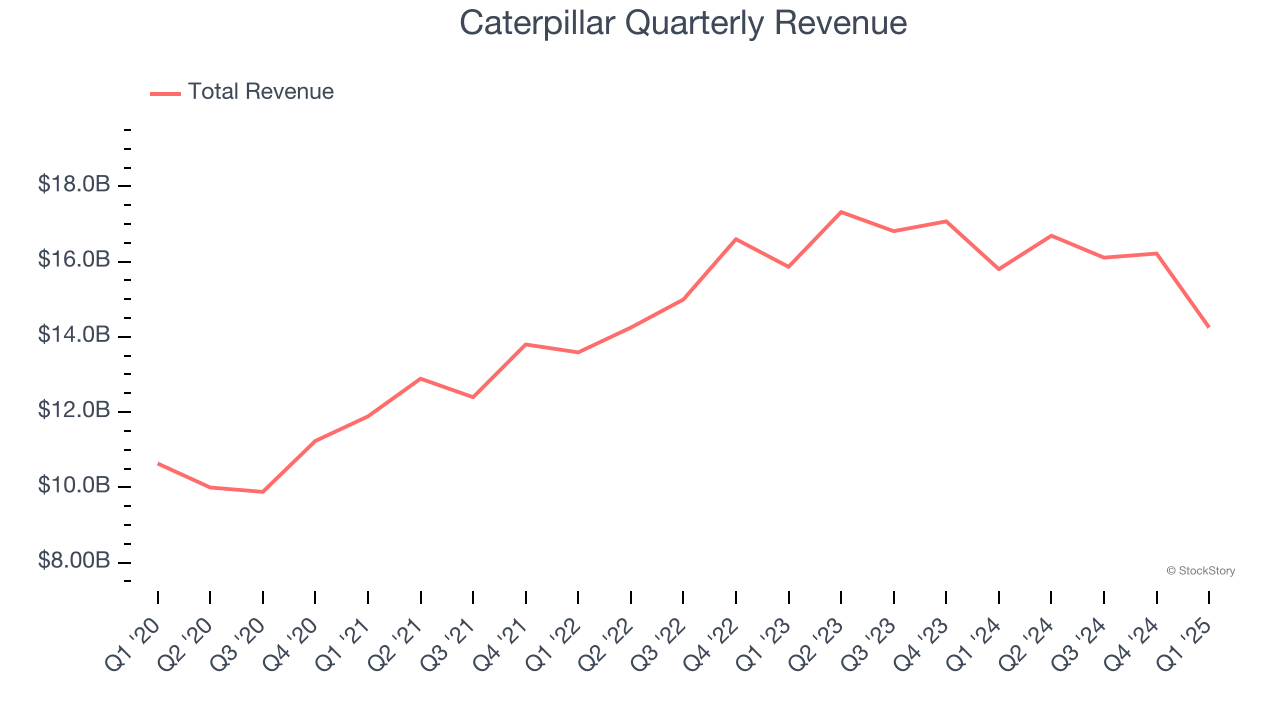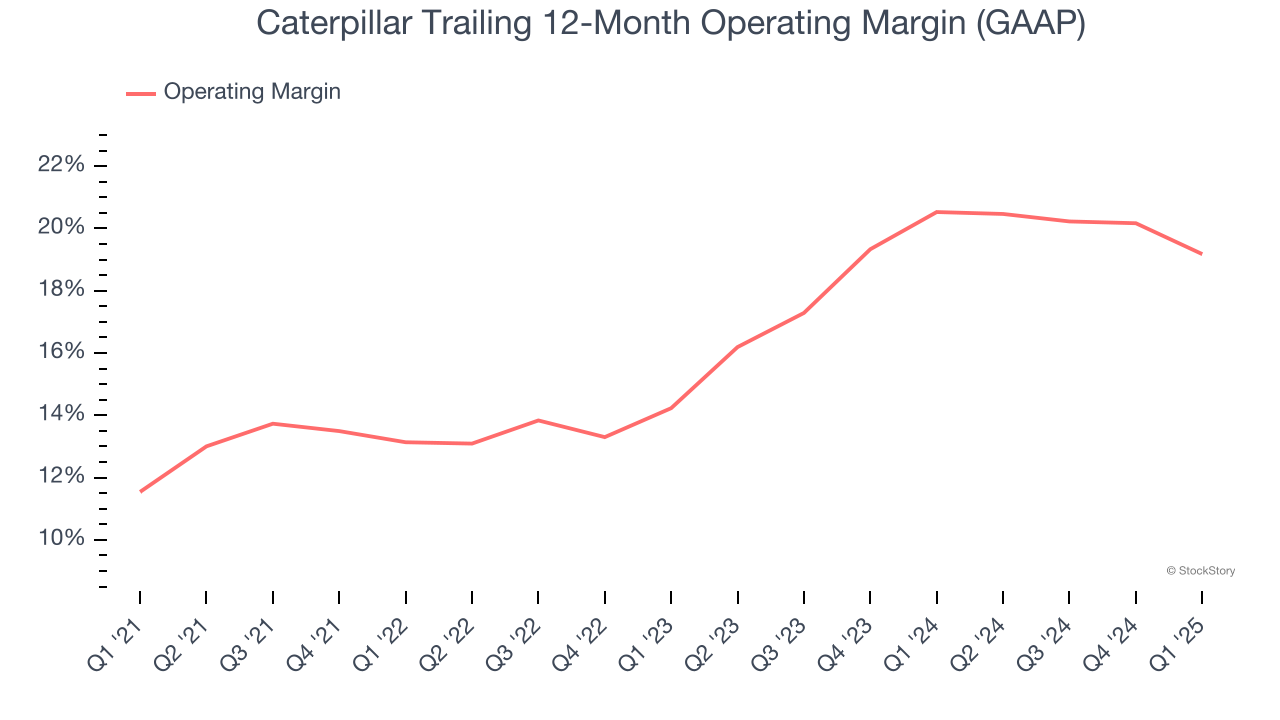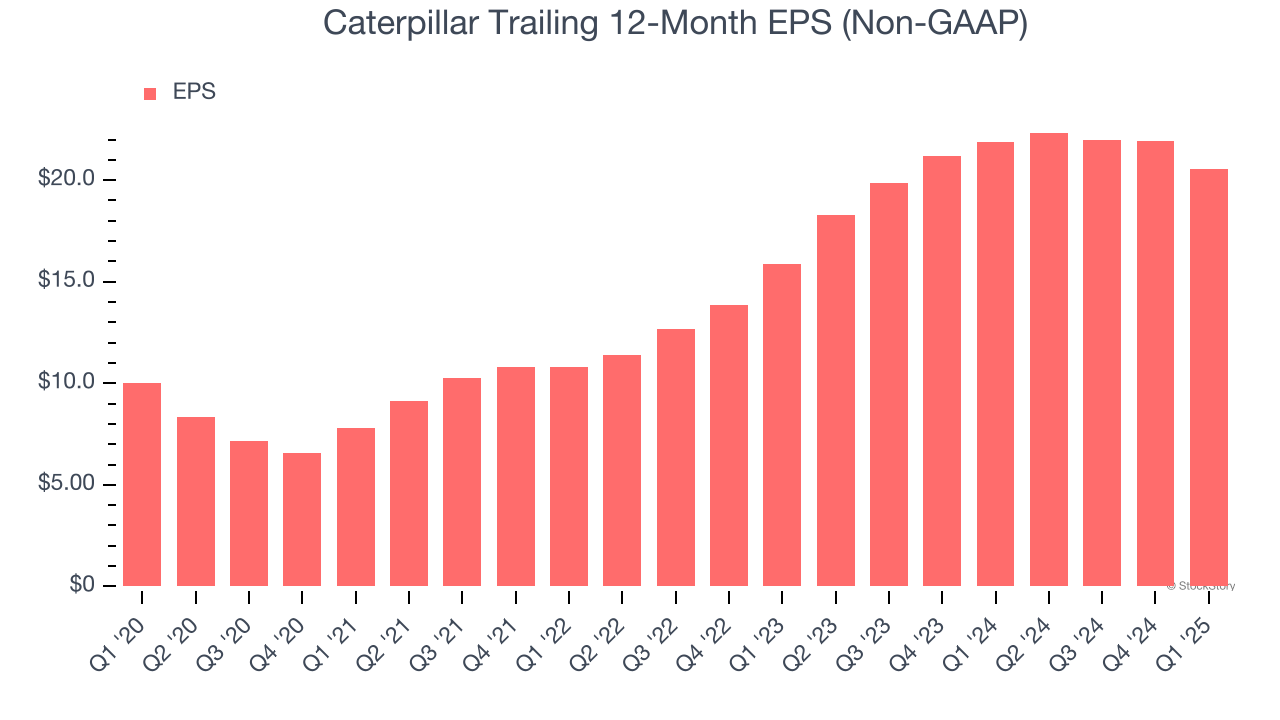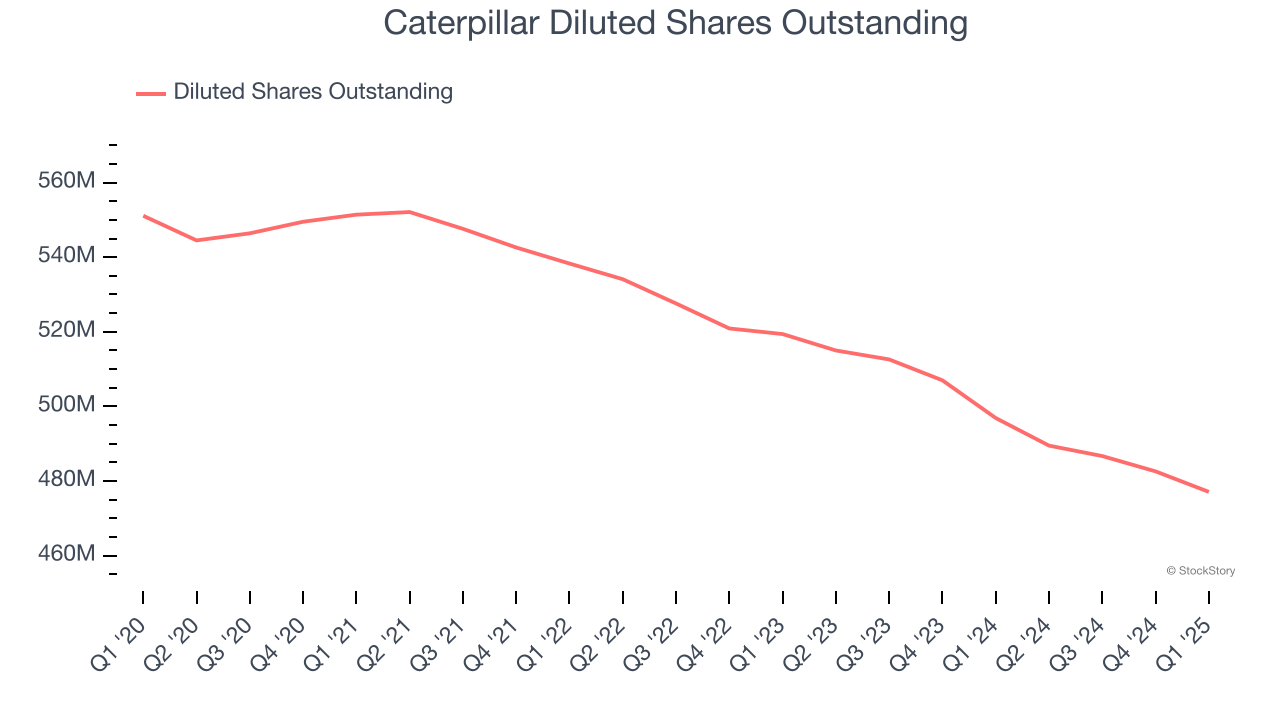
Construction equipment company Caterpillar (NYSE: CAT) fell short of the market’s revenue expectations in Q1 CY2025, with sales falling 9.8% year on year to $14.25 billion. Its non-GAAP profit of $4.25 per share was 2.3% below analysts’ consensus estimates.
Is now the time to buy Caterpillar? Find out by accessing our full research report, it’s free.
Caterpillar (CAT) Q1 CY2025 Highlights:
- Revenue: $14.25 billion vs analyst estimates of $14.65 billion (9.8% year-on-year decline, 2.7% miss)
- Adjusted EPS: $4.25 vs analyst expectations of $4.35 (2.3% miss)
- Adjusted EBITDA: $3.12 billion vs analyst estimates of $3.15 billion (21.9% margin, 1.1% miss)
- Operating Margin: 18.1%, down from 22.3% in the same quarter last year
- Free Cash Flow Margin: 2.6%, down from 9.6% in the same quarter last year
- Market Capitalization: $146.9 billion
"I'm proud of our global team's continued support of our customers and for delivering another quarter of solid results," said Chairman and CEO Jim Umpleby.
Company Overview
With its iconic yellow machinery working on construction sites, Caterpillar (NYSE: CAT) manufactures construction equipment like bulldozers, excavators, and parts and maintenance services.
Sales Growth
Examining a company’s long-term performance can provide clues about its quality. Any business can put up a good quarter or two, but many enduring ones grow for years. Regrettably, Caterpillar’s sales grew at a sluggish 4.4% compounded annual growth rate over the last five years. This wasn’t a great result compared to the rest of the industrials sector, but there are still things to like about Caterpillar.

Long-term growth is the most important, but within industrials, a half-decade historical view may miss new industry trends or demand cycles. Caterpillar’s recent performance shows its demand has slowed as its annualized revenue growth of 1.3% over the last two years was below its five-year trend. We also note many other Construction Machinery businesses have faced declining sales because of cyclical headwinds. While Caterpillar grew slower than we’d like, it did do better than its peers. 
This quarter, Caterpillar missed Wall Street’s estimates and reported a rather uninspiring 9.8% year-on-year revenue decline, generating $14.25 billion of revenue.
Looking ahead, sell-side analysts expect revenue to remain flat over the next 12 months, a slight deceleration versus the last two years. This projection doesn't excite us and suggests its products and services will face some demand challenges. At least the company is tracking well in other measures of financial health.
Here at StockStory, we certainly understand the potential of thematic investing. Diverse winners from Microsoft (MSFT) to Alphabet (GOOG), Coca-Cola (KO) to Monster Beverage (MNST) could all have been identified as promising growth stories with a megatrend driving the growth. So, in that spirit, we’ve identified a relatively under-the-radar profitable growth stock benefiting from the rise of AI, available to you FREE via this link.
Operating Margin
Operating margin is a key measure of profitability. Think of it as net income - the bottom line - excluding the impact of taxes and interest on debt, which are less connected to business fundamentals.
Caterpillar has been a well-oiled machine over the last five years. It demonstrated elite profitability for an industrials business, boasting an average operating margin of 16.2%. This result was particularly impressive because of its low gross margin, which is mostly a factor of what it sells and takes huge shifts to move meaningfully. Companies have more control over their operating margins, and it’s a show of well-managed operations if they’re high when gross margins are low.
Analyzing the trend in its profitability, Caterpillar’s operating margin rose by 7.6 percentage points over the last five years, as its sales growth gave it operating leverage.

This quarter, Caterpillar generated an operating profit margin of 18.1%, down 4.2 percentage points year on year. Conversely, its gross margin actually rose, so we can assume its recent inefficiencies were driven by increased operating expenses like marketing, R&D, and administrative overhead.
Earnings Per Share
We track the long-term change in earnings per share (EPS) for the same reason as long-term revenue growth. Compared to revenue, however, EPS highlights whether a company’s growth is profitable.
Caterpillar’s EPS grew at a spectacular 15.4% compounded annual growth rate over the last five years, higher than its 4.4% annualized revenue growth. This tells us the company became more profitable on a per-share basis as it expanded.

We can take a deeper look into Caterpillar’s earnings to better understand the drivers of its performance. As we mentioned earlier, Caterpillar’s operating margin declined this quarter but expanded by 7.6 percentage points over the last five years. Its share count also shrank by 13.4%, and these factors together are positive signs for shareholders because improving profitability and share buybacks turbocharge EPS growth relative to revenue growth. 
Like with revenue, we analyze EPS over a more recent period because it can provide insight into an emerging theme or development for the business.
For Caterpillar, its two-year annual EPS growth of 13.7% was lower than its five-year trend. We still think its growth was good and hope it can accelerate in the future.
In Q1, Caterpillar reported EPS at $4.25, down from $5.60 in the same quarter last year. This print missed analysts’ estimates, but we care more about long-term EPS growth than short-term movements. Over the next 12 months, Wall Street expects Caterpillar’s full-year EPS of $20.56 to shrink by 5.5%.
Key Takeaways from Caterpillar’s Q1 Results
We struggled to find many positives in these results. Its revenue missed significantly and its EPS fell short of Wall Street’s estimates. Overall, this quarter could have been better. The stock remained flat at $308.55 immediately following the results.
So do we think Caterpillar is an attractive buy at the current price? When making that decision, it’s important to consider its valuation, business qualities, as well as what has happened in the latest quarter. We cover that in our actionable full research report which you can read here, it’s free.







